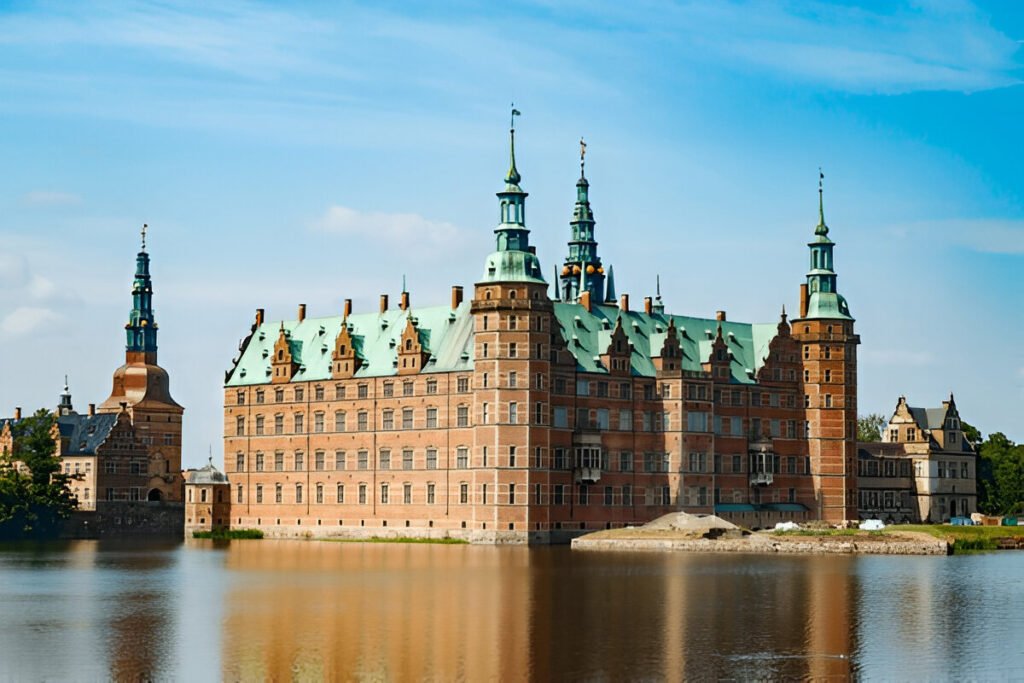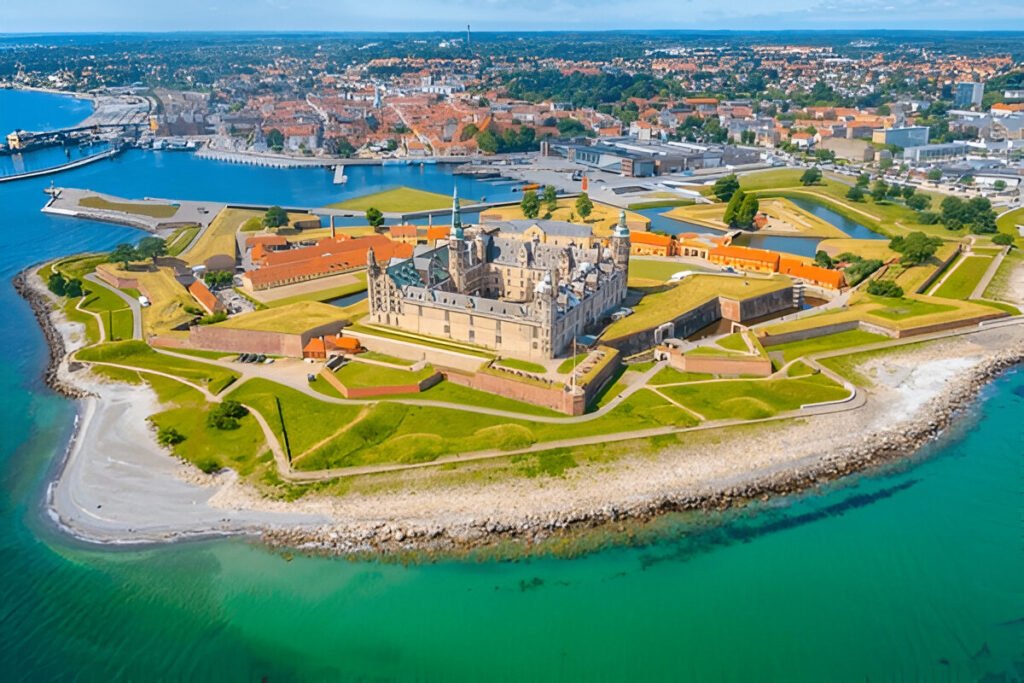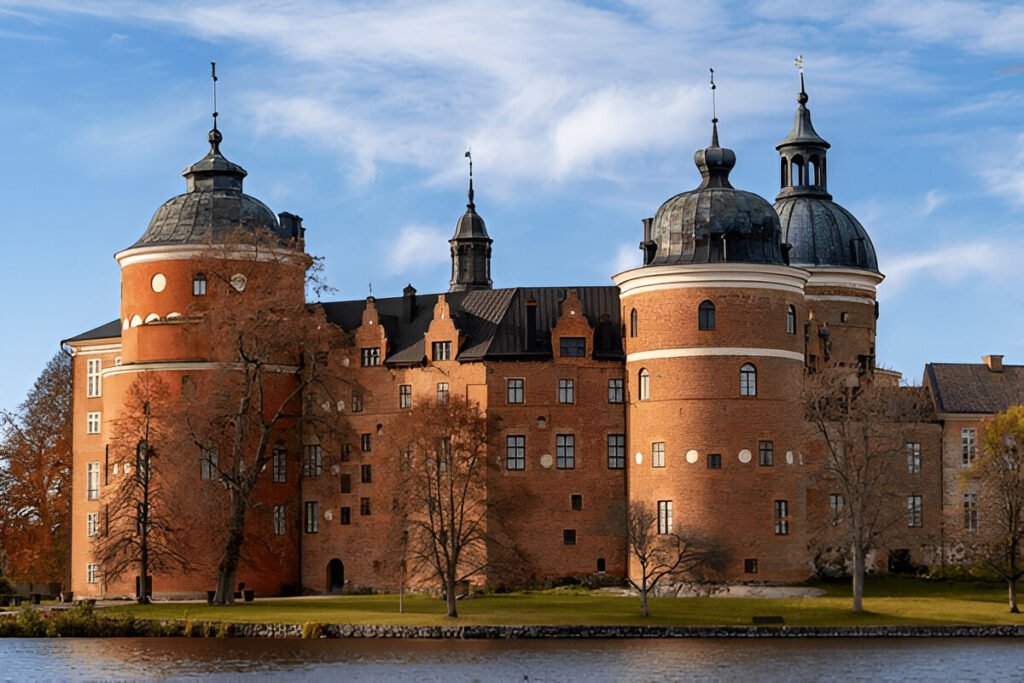Introduction
Scandinavia is a region steeped in history, where stunning castles and palaces stand as symbols of its royal heritage, architectural splendor, and cultural evolution. These majestic structures, scattered across Denmark, Sweden, and Norway, invite travelers to explore their intricate designs, fascinating stories, and breathtaking surroundings. Whether you’re a history enthusiast, an architecture lover, or simply looking for a picturesque escape, these Scandinavian gems promise unforgettable experiences.
In this comprehensive guide, we delve into the must-visit castles and palaces of Scandinavia, highlighting their unique features, historical significance, and tips for making the most of your visit.
1. Kronborg Castle, Denmark

Famous as the setting of Shakespeare’s Hamlet, Kronborg Castle in Helsingør is a UNESCO World Heritage Site and an icon of Denmark’s Renaissance architecture. Constructed in the late 16th century, the castle commands attention with its grand towers, ornate ballrooms, and scenic location overlooking the Øresund Strait.
Visitors can explore the royal chambers, admire the detailed tapestries, and venture into the dungeons, where the legendary statue of Holger Danske is said to protect Denmark. Kronborg’s cultural significance and stunning views make it a must-see destination.
2. Frederiksborg Castle, Denmark
Nestled in Hillerød, Frederiksborg Castle is Denmark’s largest Renaissance castle. Built by King Christian IV in the early 1600s, it features elegant halls, intricate ceilings, and an exquisite chapel of orders. The castle is home to the Museum of National History, where you can explore centuries of Danish art and history.
The surrounding Baroque garden adds to the castle’s charm, offering manicured hedges, fountains, and peaceful pathways. It’s a perfect spot for a serene stroll after soaking in the history.
3. Egeskov Castle, Denmark
Egeskov Castle, a beautifully preserved Renaissance water castle, is located on the island of Funen. Built in 1554, this fairy-tale-like castle is surrounded by a reflective moat and lush gardens.
Inside, visitors can explore rooms adorned with antique furniture, historic weaponry, and a fascinating collection of vintage cars. The castle grounds also feature treetop walkways, a hedge maze, and family-friendly attractions, making it ideal for travelers of all ages.
4. Drottningholm Palace, Sweden

Situated near Stockholm, Drottningholm Palace is a UNESCO World Heritage Site and the private residence of Sweden’s royal family. Built in the 16th century, the palace boasts a mix of French-inspired Baroque and Rococo architecture.
The palace’s highlights include its opulent interiors, the Chinese Pavilion—a delightful summer retreat—and a Baroque garden with symmetrical designs. Don’t miss the Drottningholm Court Theatre, one of the world’s oldest theaters still in operation.
5. Gripsholm Castle, Sweden
Perched on the shores of Lake Mälaren, Gripsholm Castle is a striking Renaissance fortress. Built in the 16th century, it houses the Swedish National Portrait Gallery, featuring an extensive collection of portraits that span centuries.
Visitors can wander through the castle’s rooms, explore its historic library, and marvel at the scenic lakeside views. Gripsholm’s blend of cultural treasures and natural beauty makes it a popular destination.
6. Kalmar Castle, Sweden
Kalmar Castle stands as a testament to Sweden’s medieval and Renaissance heritage. Originally a 12th-century fortress, it was transformed into a grand Renaissance castle in the 16th century.
Known for its role in the Kalmar Union, which united Scandinavian countries, the castle features imposing towers, historic murals, and a chapel. Guided tours bring its rich history to life, while the surrounding Kalmar town offers charming streets to explore.
7. Akershus Fortress, Norway

Akershus Fortress is a medieval castle that has watched over Oslo since the late 13th century. Initially built for defensive purposes, it evolved into a royal residence and later a Renaissance-style palace.
Today, the fortress houses the Norwegian Resistance Museum and serves as a venue for events. Its strategic location overlooking the Oslofjord provides stunning views, making it a favorite for history buffs and photographers alike.
8. Bergenhus Fortress, Norway
Located in Bergen, Bergenhus Fortress is one of Norway’s oldest castles, dating back to the 13th century. It played a central role during the medieval era as a royal seat.
Visitors can explore Haakon’s Hall, a medieval banquet hall, and the Rosenkrantz Tower, which offers insights into the fortress’s defensive history. Bergenhus also hosts cultural events, blending history with modern entertainment.
9. Rosenborg Castle, Denmark
Rosenborg Castle, situated in Copenhagen, is a treasure trove of royal history. Built in the early 17th century by King Christian IV, the castle houses Denmark’s crown jewels and royal regalia.
Its richly decorated interiors, featuring tapestries, ornate ceilings, and opulent furnishings, transport visitors to Denmark’s golden age. The surrounding King’s Garden is a tranquil oasis in the city, perfect for a leisurely stroll.
10. Läckö Castle, Sweden
Läckö Castle, perched on the shores of Lake Vänern, is a Baroque masterpiece with roots in medieval times. Transformed into a palace in the 17th century, it features whitewashed walls, intricate interiors, and expansive grounds.
The castle hosts concerts, exhibitions, and events, particularly during the summer. Its lakeside location provides a serene backdrop for exploring its history and enjoying cultural activities.
11. Christiansborg Palace, Denmark

Christiansborg Palace in Copenhagen is unique as it houses Denmark’s Parliament, Supreme Court, and royal reception rooms. Visitors can tour the royal staterooms, the Great Hall with its modern tapestries, and the underground ruins of the original castle.
The palace is a blend of history, politics, and art, offering insights into Denmark’s past and present. Its central location makes it a convenient addition to any Copenhagen itinerary.
12. Oscarshall, Norway
Oscarshall is a charming summer palace located on the Bygdøy Peninsula near Oslo. Built in the mid-19th century, this small but elegant structure is adorned with intricate woodwork, frescoes, and romantic details.
The palace is surrounded by a park that offers peaceful walking paths and panoramic views of the Oslofjord. It’s an ideal spot for a quiet escape from the city.
13. Frederiksberg Palace, Denmark
Overlooking Frederiksberg Gardens in Copenhagen, Frederiksberg Palace is a Baroque-style retreat built for Danish royalty in the 18th century. Although now home to the Royal Danish Military Academy, parts of the palace and its gardens remain open to the public.
The gardens, with their canals, bridges, and lush greenery, are a favorite among locals and visitors for picnics and leisurely walks.
14. Skokloster Castle, Sweden
Skokloster Castle, located near Uppsala, is a well-preserved Baroque mansion from the 17th century. Its interiors remain largely untouched, providing a glimpse into the opulence of the time.
The castle’s collection of art, books, and historic weapons is remarkable, making it a must-visit for history enthusiasts. Its serene lakeside setting adds to its charm.
Why Visit Scandinavian Castles and Palaces?

The castles and palaces of Scandinavia are more than architectural marvels; they are gateways to the region’s rich history and culture. Each site tells its own story of royal intrigue, military strategy, or artistic achievement.
Moreover, their scenic locations—by lakes, fjords, or lush gardens—enhance the experience, offering visitors a perfect blend of history and natural beauty.
Tips for Exploring Scandinavian Castles and Palaces
- Plan Ahead: Check seasonal schedules, as some sites are open only during specific times of the year.
- Take Guided Tours: Guided tours provide fascinating insights and stories you might miss on your own.
- Combine Attractions: Many castles are near other landmarks, allowing you to create an enriched itinerary.
- Respect the Sites: Follow the rules to help preserve these historical treasures for future generations.
Conclusion
Scandinavia’s castles and palaces are timeless monuments that showcase the region’s history, art, and culture. From the medieval defenses of Akershus Fortress to the regal elegance of Drottningholm Palace, each destination offers a unique and enriching experience.
A journey through these landmarks is not just about exploring historical architecture—it’s about immersing yourself in the stories, traditions, and beauty that define Scandinavia. Plan your visit today and step into a world where history comes alive.











